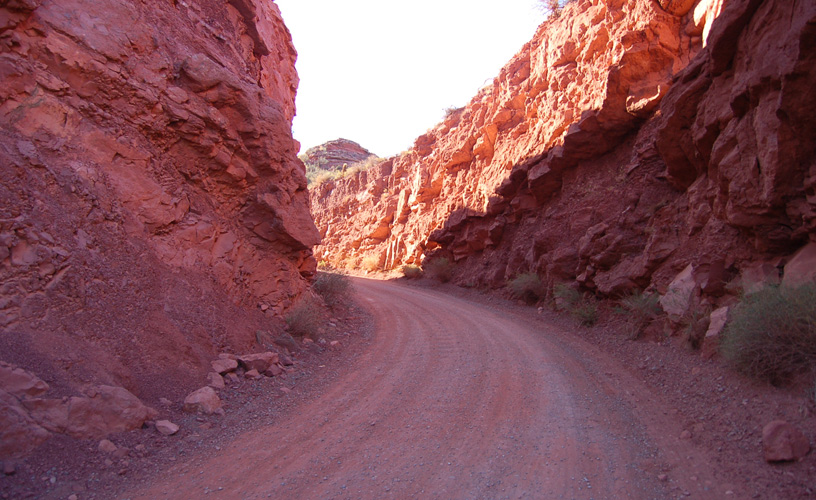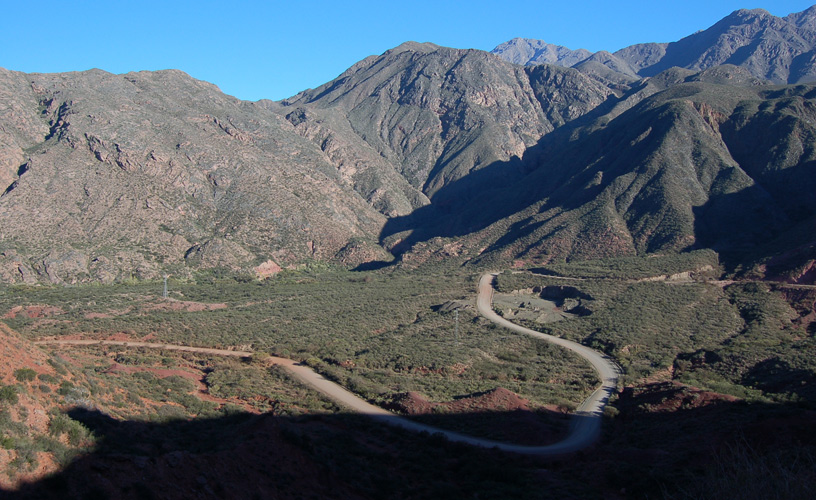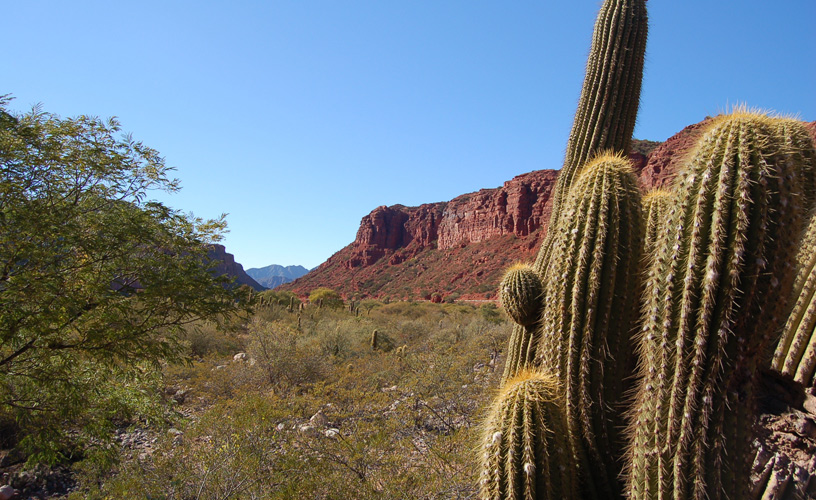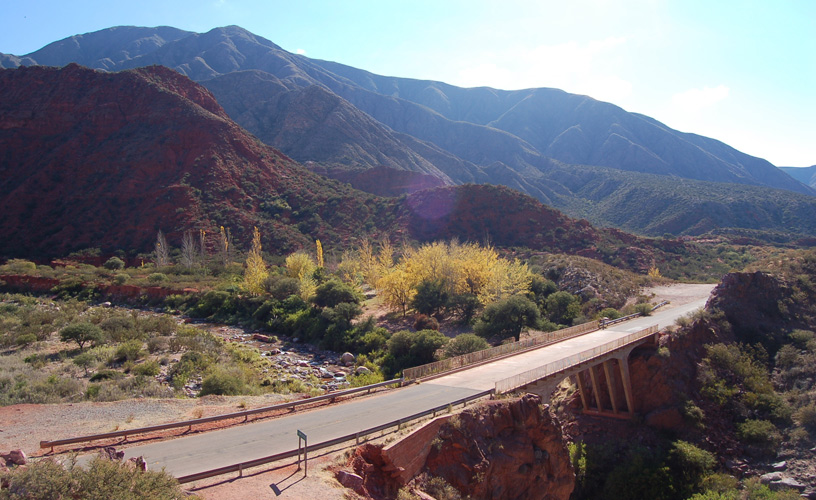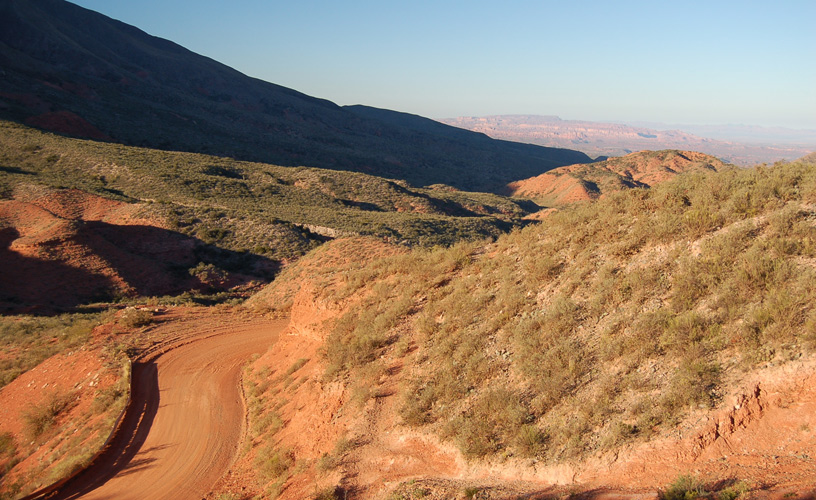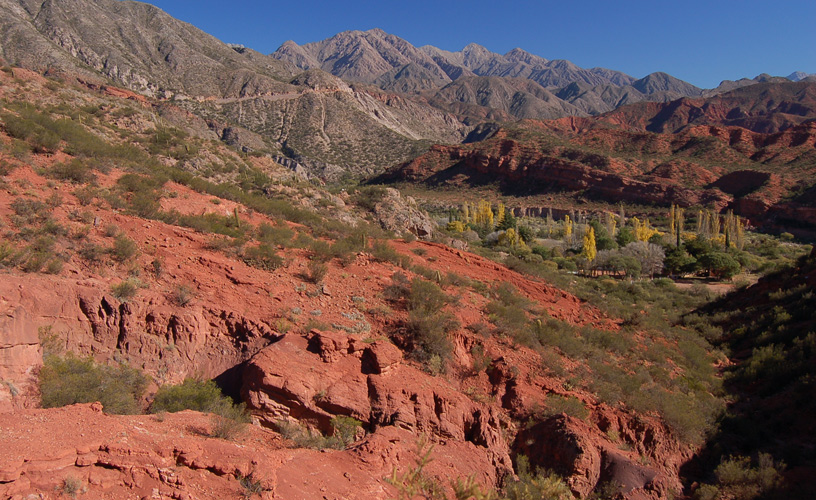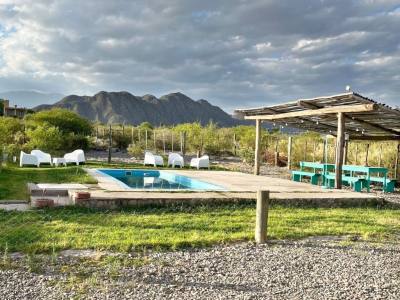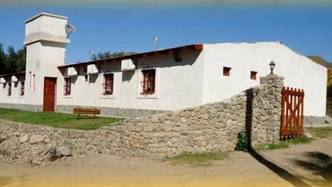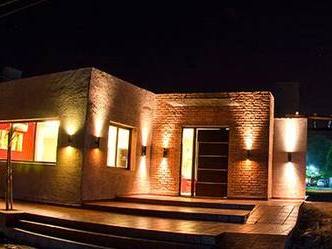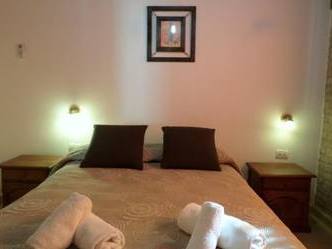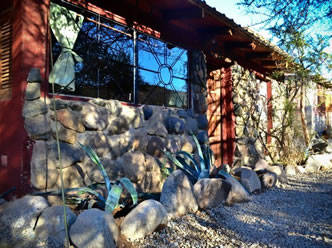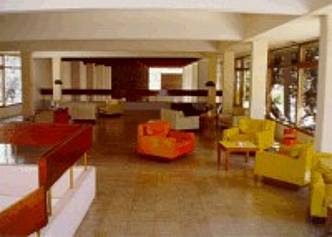The Inka Ñan Tourism shuttle picked us up on the dot where we had arranged. We headed South through legendary Route 40. A clear morning with cool air predicted an ideal day to visit the famous Cuesta de Miranda, a place promising big rocky outcrops of changing shapes and intense red color. There we went. The immensity of Famatina Hill, with its eternal snow, was the silent witness of our tour along the way. The contrast of the snow-capped summits with the blue sky and the green mountains creates a perfect postcard to keep in our minds. Through the truck window we could see the town of Nonogasta (“town of the breasts”) and Sañogasta (”town of clay” in the Canano tongue) in the background. We found out that the remarkable jurist Joaquín V. González was born in Nonogasta. To the side of the road, we found some jarillas, gorse, chañares and algarrobos scattered around the nearby fields. Farther ahead, there were the first cardons pointing at the sky like accusing fingers while the Miranda River showed us the way. A historical site known as “La Pelea” (the Fight) is located there, where José Linares was beaten in combat by Colonel Felipe Varela in one of the riots between unitarios and federales.
Fire Walls
We headed forward. We could see two hills around us and our imagination let us see the Sleeping Indian on one of the mountains on the way.
After several turns, the route became a gravel road and we started to drive along Cuesta de Miranda (the Miranda slope). It is called like that because the Spanish governor don Juan de Miranda was the former owner of these lands. It is a different geologic formation, belonging to the Carboniferous Permian Period, where iron oxide predominates producing a crimson red color.
The water from the recent rainfalls highlighted the clay color and the midday sunshine made it burn like fire.
The shuttle pulled over for us to take pictures. We watched how the cacti made a colony that seemed to come down from the hill as in a procession.
The steep ravines themselves were a show. The road went up and down alternatively. The precipices were over three hundred meters high.
Marcelo Sola
Marcelo Sola
Contact of the excursion or tour
Inka Ñan Turismo
Leovino Martínez 49, Chilecito, La Rioja, Agentina
Phone: +54 3825-423641
Cell phone: +54 3825-671933
